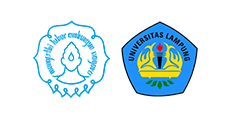Evaluasi Penerapan Moodle Dalam Pembelajaran Kejuruan Menggunakan Gibb's Reflective Learning Cycle
Abstract
Good interaction between educators and learners can encourage the achievement of learning objectives. However, if the interaction goes well, the result will be the opposite. Moreover, the learning process needs to encourage students to think critically. However, it will instead become a burden in the learning process so that there is no collaboration between students during the learning process. This study aims to understand the perceptions of teachers and students towards the application of the Moodle Learning Management System (LMS) to improve learning outcomes that are still low using several types of learning media. This research uses a qualitative approach with Gibb's Reflective Learning Cycle technique to obtain the perceptions of educators and students. This research was conducted because, in the learning process, many still need to learn to use technology appropriately. The media used is less innovative and limited, so learning has yet to be created that encourages students to think critically and comprehensively. Unlike moodle research in general, this research is used to evaluate two sides of using technology, especially moodle, in helping the learning process, namely on the side of educators and students.
Full Text:
PDFReferences
[1] P. Budiastuti, S. Soenarto, H. Wahyu Ramndani, P. Studi Pendidikan Vokasional Teknik Elektronika, dan U. Ahmad Dahlan, “Analisis Tujuan Pembelajaran dengan Kompetensi Dasar pada Rencana Pelaksanaan Pembelajaran Dasar Listrik dan Elektronika di Sekolah Menengah Kejuruan,” Yogyakarta, Mar 2021. [Daring]. Available: https://journal.uny.ac.id/index.php/jee
[2] S. F. Selegi, “Evaluasi Pelaksanaan Standar Proses Pembelajaran KKNI Program Studi Pendidikan Geografi Universitas PGRI Palembang,” Swarnabhumi, vol. 4, no. 2, Agu 2019.
[3] J. J. G. van Merriënboer dan P. A. Kirschner, Ten Steps to Complex Learning, Third edition. New York: New York: Routledge, 2018.
[4] S. Jultri, “Desain Pembelajaran Pedati Sebagai Alternatif Pengembangan Metode Asinkron,” Medan, 2021.
[5] A. Sriantini dan D. Kristiawan, “Development of business mathematics learning media based on macromedia flash,” Math Didactic: Jurnal Pendidikan Matematika, vol. 8, no. 2, hlm. 101–111, Sep 2022, doi: 10.33654/math.v8i2.1816.
[6] R. Dyah Ayu Kinesti, N. Hikmah Luthfiyana, N. Hidayah, S. Khofiyyan Nida, dan E. Syafaatul Usna, “Upaya Pemanfaatan Teknologi: Aplikasi Rpp Digital Dalam Meningkatkan Kualitas Pendidikan Di Sekolah Indonesia Kuala Lumpur (SIKL) (Studi Kasus Sekolah Indonesia Kuala Lumpur (SIKL)),” JKPD (Jurnal Kajian Pendidikan Dasar), vol. 7, no. 2, hlm. 84–90, 2022.
[7] S. Rini, D. Rosita, E. ikhtiarti, dan N. Trisna, “Pelatihan Penyusunan Instrumen Evaluasi Pembelajaran Bahasa Prancis melalui Platform Quizizz bagi Guru Bahasa Prancis se-Lampung,” Ruang Pengabdian: Jurnal Pengabdian Kepada Masyarakat, vol. 1, no. 2, hlm. 105–114, Des 2021.
[8] S. M. I. A. G. Khwaldeh, “Implementation, use and analysis of open source learning management system ‘Moodle’ and e-learning for the deaf in Jordan,” Mar 2011.
[9] T. Henderson dan R. Poulin, “Peer Comparison-of-Course/Learning Management Systems, Course Materials Life Cycle, and Related Costs,” Massachusetts, Jul 2006. [Daring]. Available: www.wcet.info
[10] S. Sudianto, D. Dwijanto, dan N. R. Dewi, “Students’ Creative Thinking Abilities and Self Regulated Learning on Project-Based Learning with LMS Moodle,” Unnes Journal of Mathematics Education Research, vol. 8, no. 1, hlm. 2019–2029, Des 2019, [Daring]. Available: http://journal.unnes.ac.id/sju/index.php/ujmer
[11] A. A. Alzahrani, “The Effect of Distance Learning Delivery Methods on Student Performance and Perception,” International Journal for Research in Education, vol. 43, no. 1, hlm. 12, Mei 2019, [Daring]. Available: https://scholarworks.uaeu.ac.ae/ijreAvailableat:https://scholarworks.uaeu.ac.ae/ijre/vol43/iss1/12
[12] V. M. Bradley, “Learning Management System (LMS) Use with Online Instruction,” International Journal of Technology in Education, vol. 4, no. 1, hlm. 68–92, Des 2020, doi: 10.46328/ijte.36.
[13] A. A. M. Santy, “MODEL SECTIONS DALAM PEMILIHAN MEDIA PEMBELAJARAN,” JURNAL ILMU KEPENDIDIKAN, vol. 14, no. 2, hlm. 95–102, Des 2021.
[14] N. Suryani, A. Setiawan, dan A. Putria, Media pembelajaran inovatif dan pengembangannya, 1 ed. Bandung: Remaja Rosdakarya, 2018.
[15] R. I. Aghni, “FUNGSI DAN JENIS MEDIA PEMBELAJARAN DALAM PEMBELAJARAN AKUNTANSI FUNCTIONS AND TYPES OF LEARNING MEDIA IN ACCOUNTING LEARNING,” Jurnal Pendidikan Akuntansi Indonesia, vol. XVI, no. 1, hlm. 98–107, Jul 2018, doi: https://doi.org/10.21831/jpai.v16i1.20173.
[16] A. Aldiab, H. Chowdhury, A. Kootsookos, F. Alam, dan H. Allhibi, “Utilization of Learning Management Systems (LMSs) in higher education system: A case review for Saudi Arabia,” dalam Energy Procedia, Des 2019, vol. 160, hlm. 731–737. doi: 10.1016/j.egypro.2019.02.186.
[17] C. Fallon dan S. Brown, E-Learning Standards A Guide to Purchasing, Developing, and Deploying Standards-Conformant e-Learning, 1 ed. Boca Raton, Florida: CRC Press, 2002. doi: https://doi.org/10.1201/9781420025330.
[18] S. R. Pandey dan S. Pandey, “Developing a More Effective and Flexible Learning ManagementSystem (LMS) for the Academic Institutions using Moodle,” dalam In International Conference on Academic Libraries, Okt 2009, hlm. 249–254.
[19] M. Zabolotniaia, Z. Cheng, E. M. Dorozhkin, dan A. I. Lyzhin, “Use of the LMS Moodle for an effective implementation of an innovative policy in higher educational institutions,” International Journal of Emerging Technologies in Learning, vol. 15, no. 13, hlm. 172–189, Jan 2020, doi: 10.3991/ijet.v15i13.14945.
[20] I. Inayatulloh, E. Sriwardiningsih, dan H. Alianto, “Open Source E-Learning Model Base on Cloud Computing Technology,” Proceedings of the International Conference on Industrial Engineering and Operations Management, vol. 2, no. 615, hlm. 1589–1603, Apr 2021.
[21] D. Ary, L. C. Jacobs, dan C. K. Sorensen Irvine, Introduction to Research in Education 9th Edition, 9 ed. Wadsworth: Cengage Learning, 2014.
[22] G. Gibbs, Learning by doing : a guide to teaching and learning methods, First. Wheatley: FEU, 1988.
[23] N. Carol dan D. Puspasari, “Pemanfaatan Media E-Learning Moodle Untuk Menunjang Pembelajaran Mahasiswa di Fakultas Manajemen dan Bisnis Universitas Ciputra,” Jurnal Pendidikan Administrasi Perkantoran(JPAP), vol. 8, no. 1, hlm. 169–170, Apr 2020, [Daring]. Available: https://journal.unesa.ac.id/index.php/jpap
[24] K. Dobashi, C. P. Ho, C. P. Fulford, M.-F. Grace Lin, dan C. Higa, “Learning pattern classification using moodle logs and the visualization of browsing processes by time-series cross-section,” Computers and Education: Artificial Intelligence, hlm. 100105, Nov 2022, doi: 10.1016/j.caeai.2022.100105.
Refbacks
- There are currently no refbacks.






